Endowed Scholars
Class of XXV (2022 – 2026)
Janko Gospocic, Ph.D.
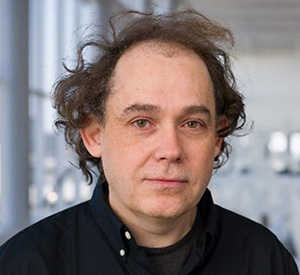
Southwestern Medical Foundation Scholar in Biomedical Research
The Gospocic lab studies how epigenetic pathways and gene expression regulate brain plasticity in the context of social behavior and ageing. The work in our lab will address two major questions: First, how do social interactions (social bonding, aggression and social defeat) induce epigenetic changes and long-lasting behavioral phenotypes? Second, what is the role of heterochromatin in premature ageing and rejuvenation in social contexts? For this purpose, we are studying a unique ant species Harpegnathos saltator in which adult worker can transition into a queen, resulting in drastic physiological and behavioral changes within a very short time span. This represents one of the most impressive examples of organismal plasticity and makes H. saltator an unparalleled, yet largely unexplored epigenetic model. We take a multidisciplinary approach and combine functional genomics, biochemistry, and behavioral assays in H. saltator, as well as the conventional models Drosophila and mouse to expedite genetic screening and provide evolutionary context to identified epigenetic pathways.
Daniel Kober, Ph.D.
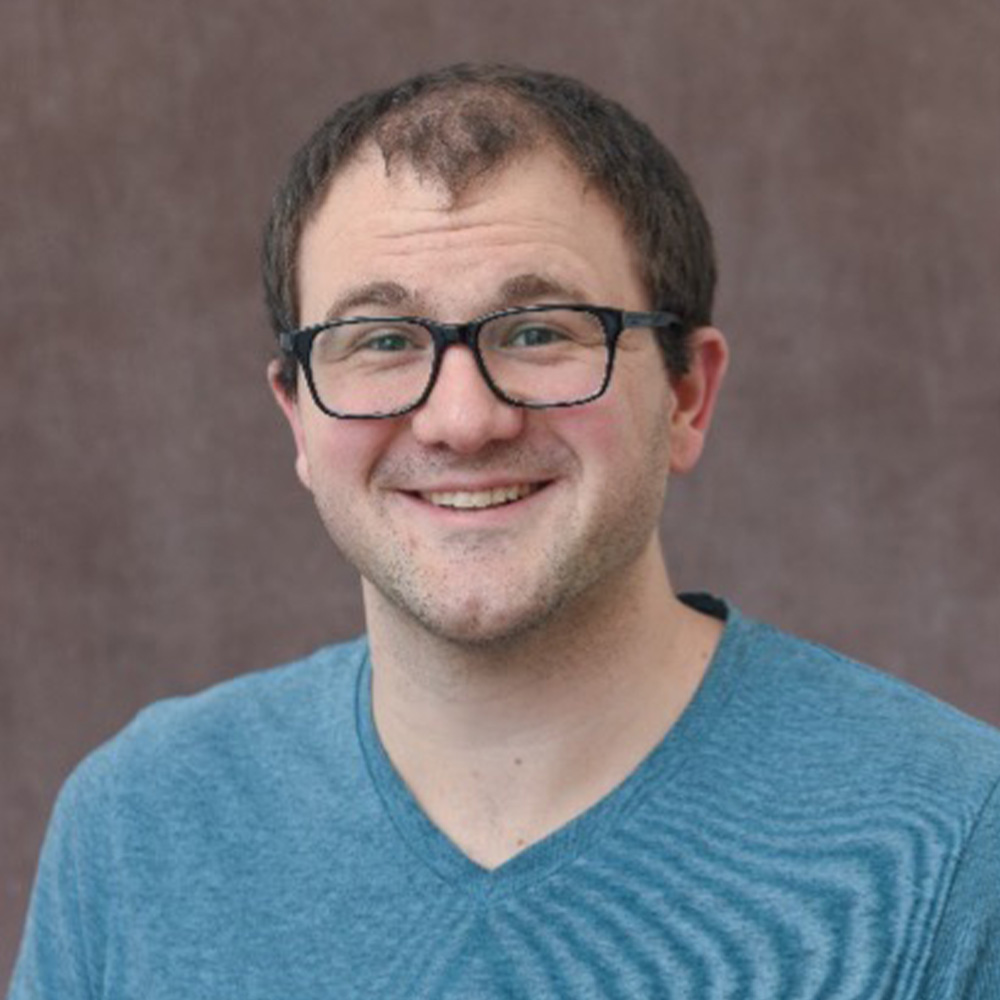
W.W. Caruth, Jr. Scholar in Biomedical Research
The Kober lab focuses on the interplay between lipid metabolism and protein turnover. We are particularly interested in understanding the biochemical and biophysical basis for the role of lipid membrane composition in inducing the targeted degradation of key proteins in lipid synthesis pathways. We use a variety of structural, cell-based, and in vitro reconstitution systems to study these dynamic regulatory pathways. Our goal is to learn how to manipulate protein turnover in cells to control lipid metabolism and apply this knowledge to metabolic diseases.
Siqi Liu, Ph.D.
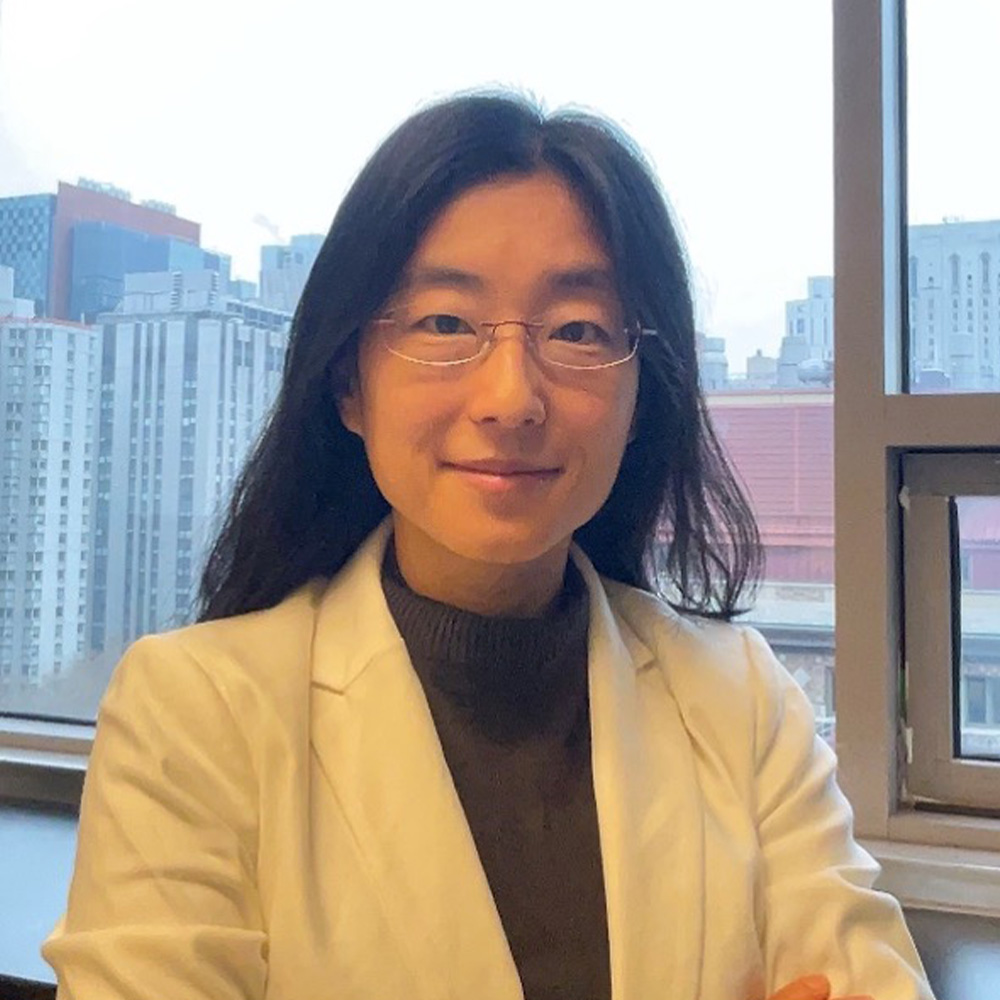
Virginia Murchison Linthicum Scholar in Medical Research
The Liu lab is broadly interested in how epithelial tissues sense and respond to injury. Similar to pathogen infection, tissue injury is an ancient and universal insult that disrupts tissue and organismal homeostasis. Prompt sensing and repair of the injury is essential for organismal health and survival. Her lab will combine biochemistry and mouse genetics to understand physiological tissue repair through in-depth probing of molecular & cellular mechanisms, to better understand the associated pathologies such as cancer.
Wen-Hao Zhang, Ph.D.
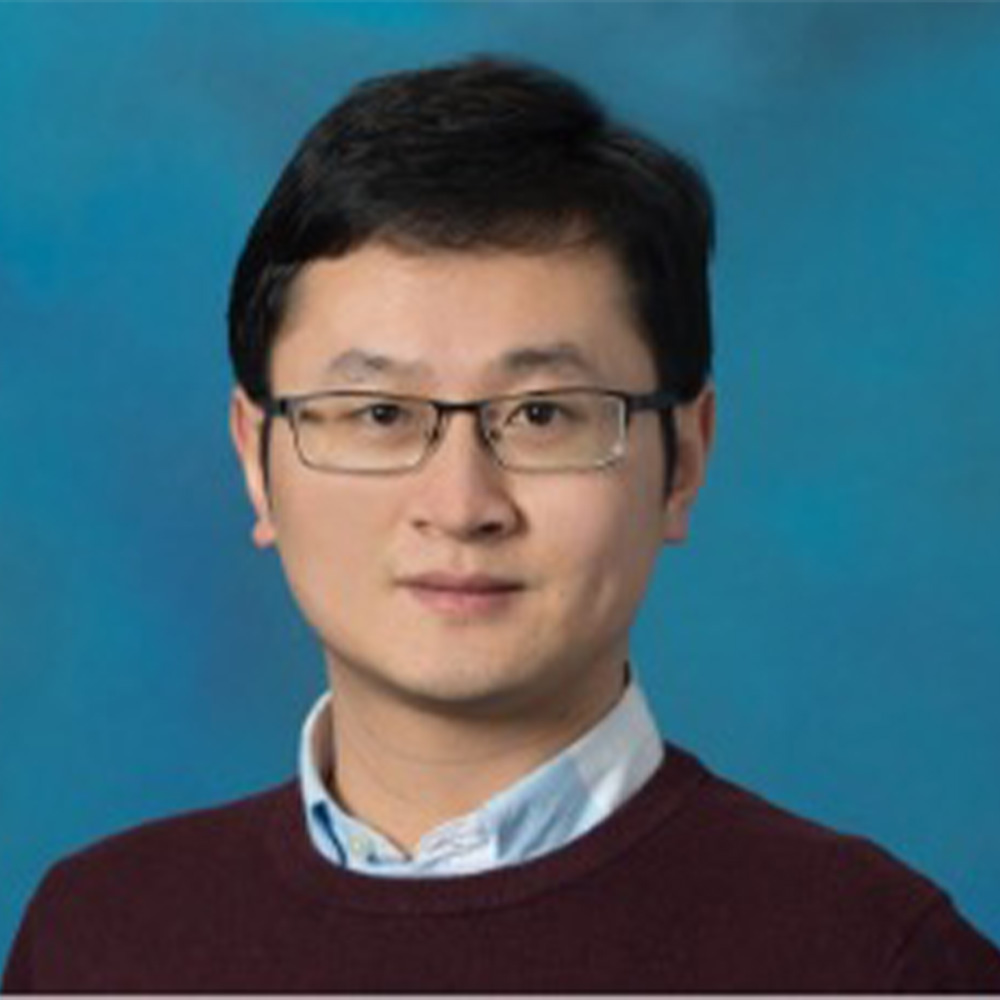
Lupe Murchison Foundation Scholar in Medical Research
The Zhang’s lab of computational neuroscience combines normative theories and biologically plausible neural circuit models to study the principles of neural information processing, in order to answer how perception, cognition, and behavior emerge from neural circuits. To conduct this interdisciplinary research, we combine techniques from nonlinear dynamics, Bayesian inference, neural coding, information theory, representation theory, etc. Meanwhile, we collaborate closely with experimental neuroscientists to verify our theories and models.
Class XXIV (2021-2025)
Seungwon (Sebastian) Choi, Ph.D.
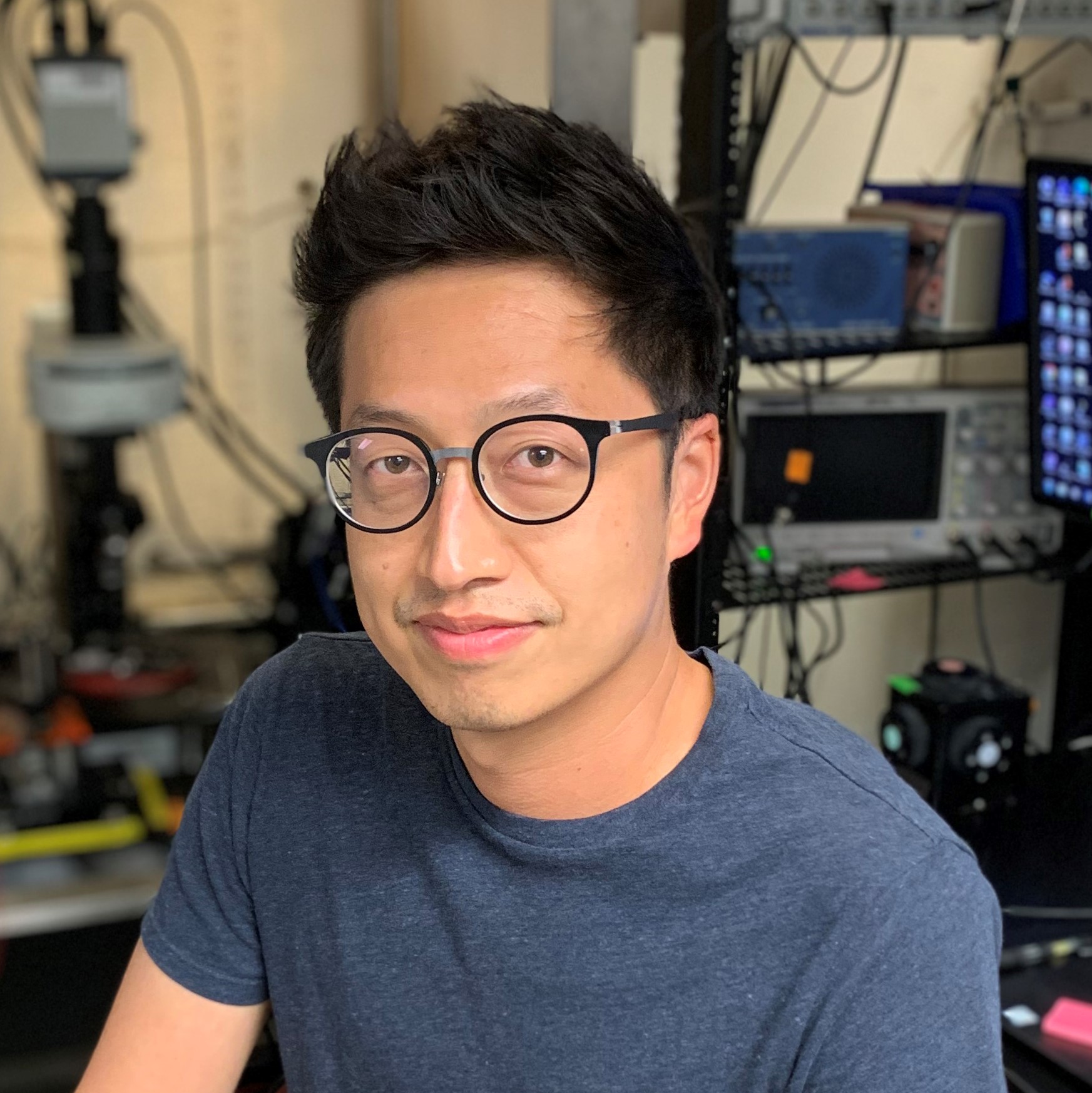
Virginia Murchison Linthicum Scholar in Medical Research
The Choi Lab aims to define the functional organization of ascending somatosensory circuitry and to use this knowledge to reveal how internal states and disorders of the nervous system shape our sense of touch and pain. We study these exciting areas using new mouse genetic tools in conjunction with advanced molecular, anatomical, physiological, and behavioral approaches.
Kevin Forsberg, Ph.D.
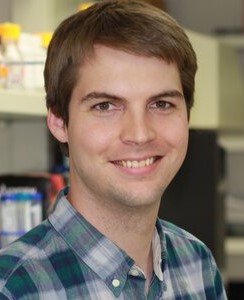
W.W. Caruth, Jr. Scholar in Biomedical Research
Bacteria and phages are in everlasting conflict – constantly devising new genes, systems, and mechanisms to keep pace with their competitors. The Forsberg lab studies this “evolutionary arms race,” using high-powered selections to unearth new functions and careful experiments to reveal their mechanisms.
Yuki Obata, Ph.D.
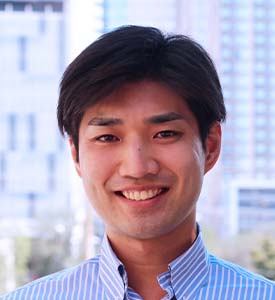
Nancy Cain and Jeffrey A. Marcus Scholar in Medical Research, in Honor of Dr. Bill S. Vowell
The Obata lab studies how environmental factors (e.g., gut microbiota and diet) shape neural circuits of the gut and brain. We use a variety of experimental techniques, including viral tracing of enteric neurons, in vivo and ex vivo physiological assays, gnotobiotic animal models and multi-omics technologies. The Obata lab is also working to elucidate the cellular and molecular mechanisms of neuroimmune interactions at barrier surfaces.
Allan-Hermann Pool, Ph.D.
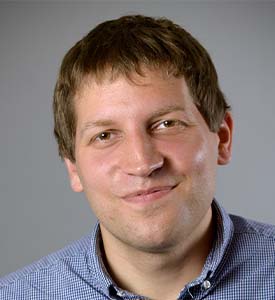
Eugene McDermott Scholar in Biomedical Research
Dr. Allan-Hermann Pool’s lab studies neural circuits that provide a sense of purpose and direction to animal behavior and develops targeted gene therapies to reengineer their function. Current work in the Pool lab aims to flesh out central circuits that mediate pain and pain relief as well as develop viral and nonviral approaches to make these circuit nodes therapeutically addressable. Previous work by Dr. Pool has outlined strategies to rapidly map the cellular basis of different drive systems, revealing how the need for water and minerals is detected in the mammalian brain as well as the cellular logic underlying distinct thirst motivations. Furthermore, his work has identified central circuits controlling hunger and thirst in insects and contributed to mapping neural circuits for social behaviors in mammals.
Courtney Schroeder, Ph.D.
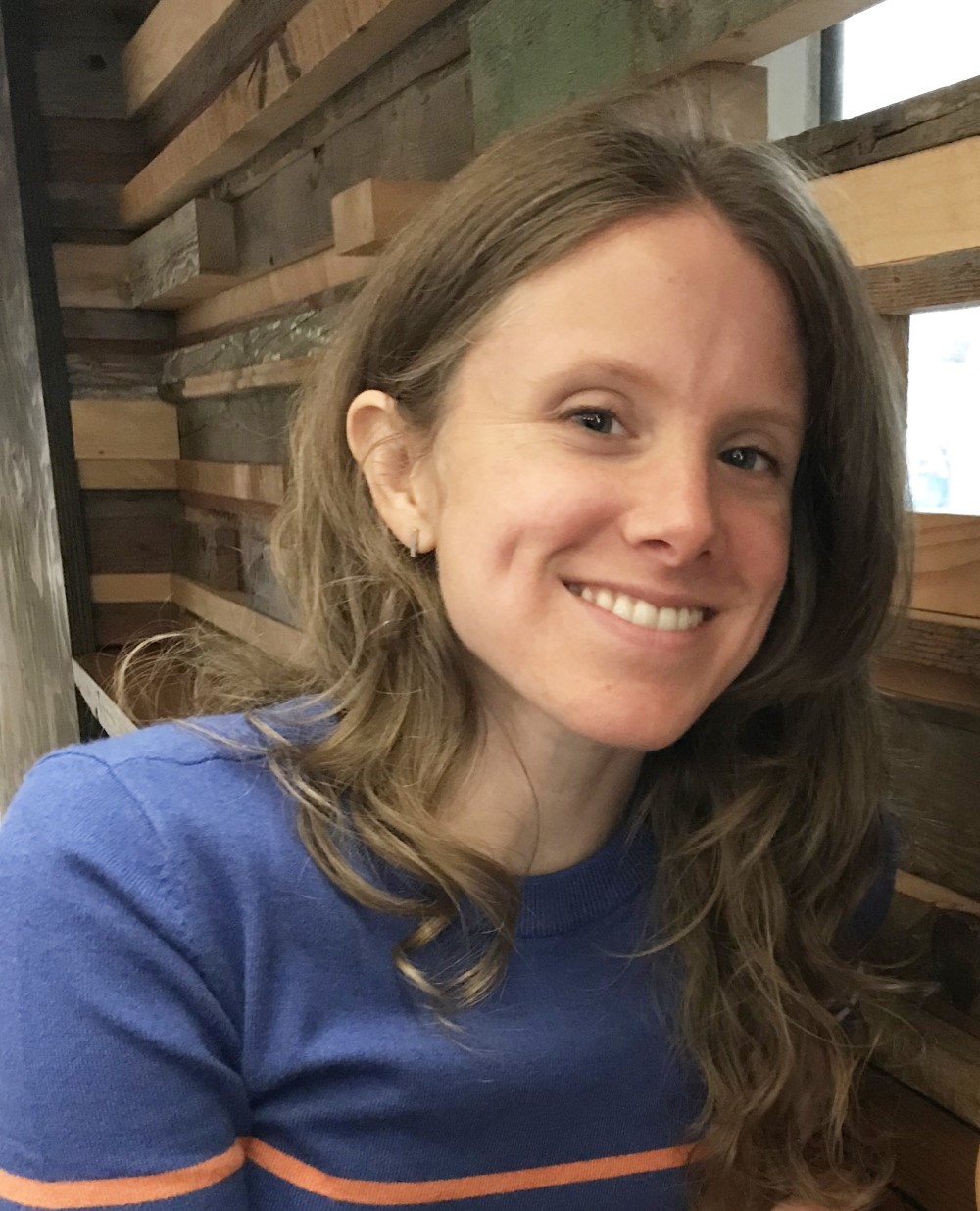
Deborah and W. A. "Tex" Moncrief, Jr. Scholar in Medical Research
The Schroeder lab studies noncanonical cytoskeletal genes that are rapidly evolving between closely related species and have adapted novel biological functions. We want to know what drives this evolutionary diversification, which is found in both flies and mammals, and what are the biological consequences in fertility, development, and cancer.
Boyuan Wang, Ph.D.
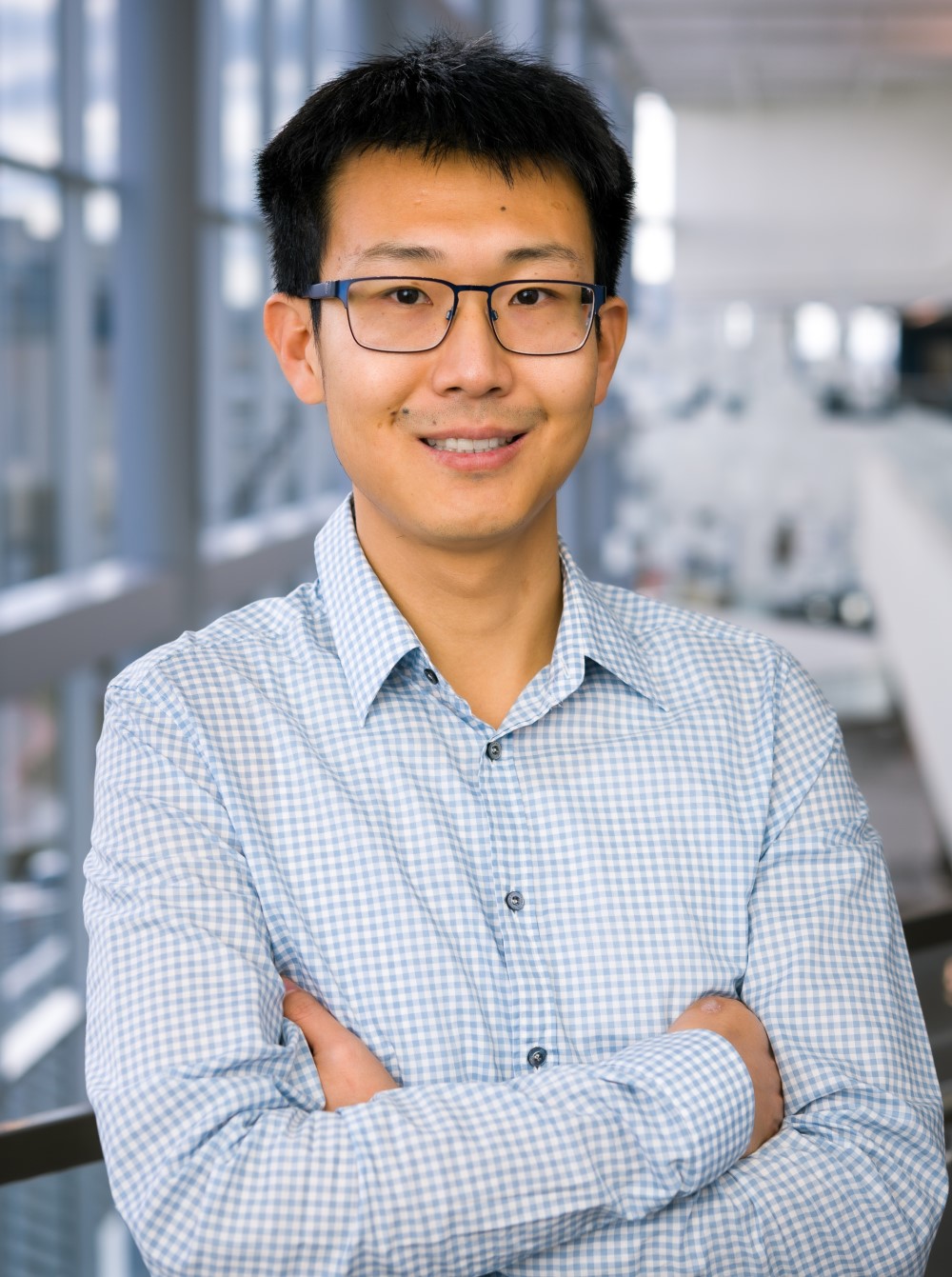
Southwestern Medical Foundation Scholar in Biomedical Research
The Wang lab uses chemical biology tools to study the molecular mechanisms underlying interesting bacterial behaviors. We are particularly interested in (p)ppGpp, a universally conserved, starvation-induced nucleotide messenger, and how it guides bacteria to a "safe mode," characterized by slow growth and enhanced antibiotic persistence.
We are also developing new approaches to (A) identify metabolite-binding RNA elements and (B) generate semisynthetic proteins in living bacteria.
Haiyang Yu, Ph.D.
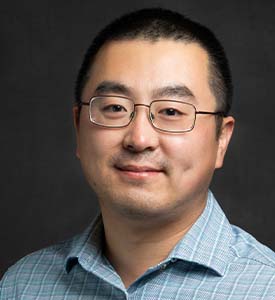
Effie Marie Cain Scholar in Medical Research
Dr. Haiyang Yu’s lab is interested in the mechanisms of protein liquid-liquid phase separation, which potentially underlies the operational principle governing the formation of membraneless organelles in cells and the assembly of pathological protein inclusions observed in patients with dementia. His lab uses cutting-edge microscopy techniques and genetically modified mouse models to understand how protein assemblies form and propagate from cell to cell and how this process would damage neurons. He and colleagues are also harnessing the protein quality control and degradation pathways to develop novel therapies for dementia. His ultimate goal is to find a cure for neurodegenerative diseases.
Class XXIII: 2020-2024
Jin Chen, Ph.D.
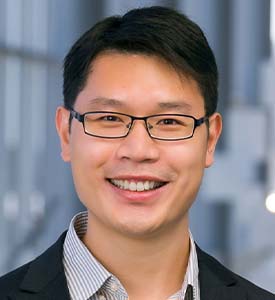
Michael L. Rosenberg Scholar in Medical Research
The Chen lab's research interest is to understand the emerging roles of the “unannotated genome,” which encodes a whole new class of uncharacterized microproteins. We focus on the relevance and function of this “dark proteome” in regulating development and disease. More broadly, our major goal is to study how gene regulation is controlled at the translational level and how translational control is misregulated in cancer and other disease contexts. We are exploring these mechanisms using a repertoire of interdisciplinary approaches, including CRISPR-based functional genomics, next generation deep-sequencing techniques, biophysical characterization, and bioinformatics.
Qian Cong, Ph.D.
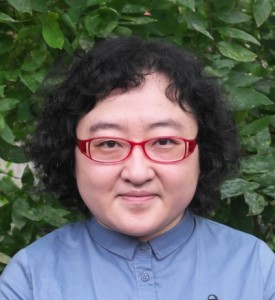
Southwestern Medical Foundation Scholar in Biomedical Research
The Cong lab seeks to integrate genomic data, evolutionary perspective, and Deep Learning methods to study the structure, interaction, and function of human proteins, with the focus on their roles in human diseases and cancers. It uses evolutionary and comparative genomics approaches to understand the genetic basis of various phenotypic traits in animals.
Nan Li, Ph.D.
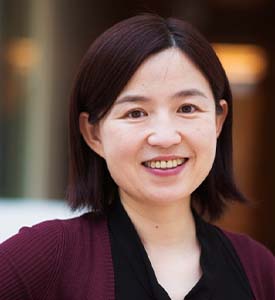
Thomas O. Hicks Scholar in Medical Research
Our lab aims to develop novel neuroimaging and neuroengineering methods to integrate molecular and system neuroscience and solve brain science problems in health and diseases. Specifically, we are interested in understanding the neural mechanisms of reward, learning, and memory in rodents. For more information, please visit nlab-utsw.org/
Matthew Parker, Ph.D.
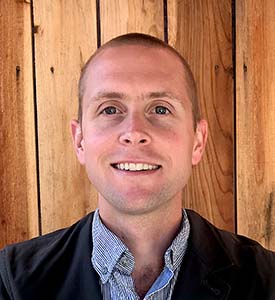
Cecil H. and Ida Green Endowed Scholar in Biomedical Computational Science
Research in the Parker lab seeks to understand the basic mechanisms underlying DNA replication initiation in metazoans. Our overarching approach is to use insights gleamed from cellular studies to build increasingly complex in vitro reconstituted systems.
Andrew Sandstrom, Ph.D.
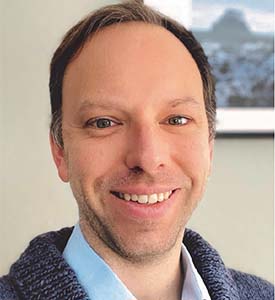
Virginia Murchison Linthicum Scholar in Medical Research
The overarching focus of the Sandstrom group is to understand how the immune system recognizes and responds to infection and stress. We are currently investigating a how family of proteins, known as inflammasomes, recognize infection to induce inflammation.
Hume Stroud, Ph.D.
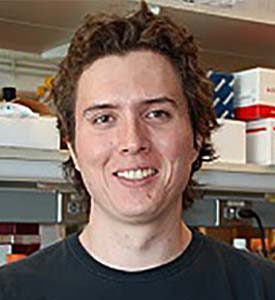
W.W. Caruth, Jr. Scholar in Biomedical Research
The Stroud lab studies noncanonical gene mechanisms in the nervous system. We are particularly interested in elucidating how external cues from the environment modulates these processes. Our long-term goal is to understand how disruption of these processes lead to various neurological disorders.
Zeng Xing, Ph.D.
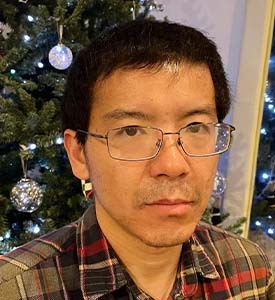
Rita C. and William P. Clements, Jr. Scholar in Medical Research
We are using the adipose tissue as a model system to study the mechanism and physiological significance of interorganellar (between endoplasmic reticulum and lipid droplets) and intercellular (between sympathetic neurons and adipocytes) communications.
Class XXII: 2019-2023
Anju Sreelatha, Ph.D.
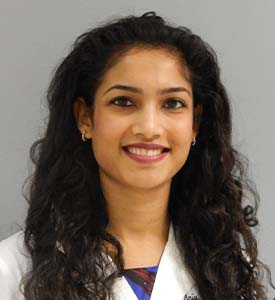
W.W. Caruth, Jr. Scholar in Biomedical Research
The lab of Dr. Anju Sreelatha is interested in investigating the molecular mechanisms of selenoproteins in health and disease. The human selenoproteome consists of 25 human selenoproteins whose functions remain largely enigmatic. Selenoproteins are a unique family of proteins that incorporate the micronutrient selenium in the form of the 21st genetically encoded amino acid, selenocysteine. One selenoprotein that is evolutionarily conserved from bacteria to humans is selenoprotein O (SelO). SelO localizes to the mitochondria where it catalyzes the transfer of AMP from ATP to several proteins that regulate the effects of reactive oxygen species (ROS). Consequently, inactivating mutations of SelO hampers the ability of the cell to defend against harmful ROS leading to cell death. These studies highlight a new enzymatic activity for the selenoprotein family and a new paradigm in the cellular antioxidant pathway.
Lu Sun, Ph.D.
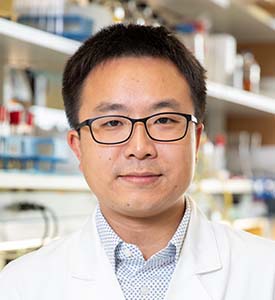
Southwestern Medical Foundation Scholar in Biomedical
The Sun lab studies the most numerous cells in the brain called “glia.” We aim to understand the fundamental principles governing the communications between the nerve cells (neurons) and the glial cells in health and disease. We have focused on the oligodendrocytes, the sole myelin-producing glial cells in the central nervous system. Our work aims to address the following questions: What makes immature oligodendrocytes so vulnerable during development and in neurological diseases? How do oligodendrocytes (each of them has three to 80 processes) choose and ensheath nearby axons? How are myelination location and timing precisely controlled across diverse brain regions to regulate nervous system function?
Jian Zhou, Ph.D.
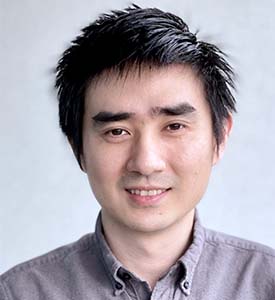
Lupe Murchison Foundation Scholar in Medical Research
We are entering a new era in genomics with exciting opportunities for computation-driven discovery. Our aim is to develop computational methods to unveil the hidden biological circuitries behind the data, from understanding sequence-based regulations to the evolution of genomes and their impact to diseases.
Class XXI: (2018-2022)
Robert Orchard, Ph.D.
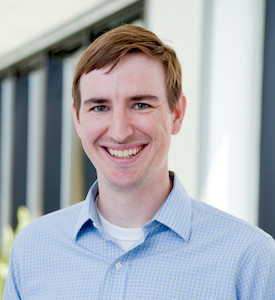
Nancy Cain and Jeffery A. Marcus Scholar in Medical Research, in Honor of Dr. Bill S. Vowell
Dr. Robert Orchard is interested in the dynamic interplay between pathogens and the immune system. He has developed novel functional genomic screening platforms to identify host pathways that regulate viral replication. Using these tools, he has uncovered new mechanisms by which certain viruses hijack the host cellular machinery, while also identifying new effector molecules of the host that can restrict viral replication. He aims to identify novel vulnerabilities in a virus or bacterial life cycle which could represent a therapeutic target. Also, the Orchard lab uses viruses as tools to better understand mammalian physiology and immune responses. In addition to genomic screens, the Orchard lab combines biochemistry, cell biology, and small animal models to dissect the complex interactions between pathogen and host in order to understand these processes at both an atomic and organismal level.
Benjamin Weaver, Ph.D.
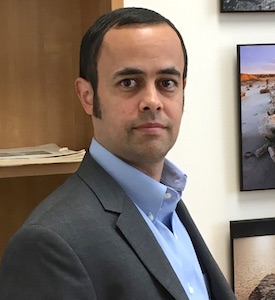
Virginia Murchison Linthicum Scholar in Medical Research
The central goal of Dr. Benjamin Weaver's lab is to identify the unifying principles that underly the regulation of non-apoptotic, cell vigor functions of caspases. Evidence obtained from diverse organisms depicts a new landscape for caspases in cellular processes including important roles in regulating stemness, regenerative capacity, cell migration, stress responses, and other functions. Genetic masking has long hindered our ability to observe many of these non-canonical caspase functions, which we dub “cell vigor” functions.
The big unknowns that the Weaver lab is seeking answers to are: (1) how caspases with both cell-death and cell-vigor functions are differentially regulated, and (2) how a given caspase is able to distinguish cell-death from cell-vigor substrates. To tackle these challenging questions, we employ a cross-disciplinary approach including genetics, proteomics and biophysical analyses.
Daisuke Hattori, Ph.D.
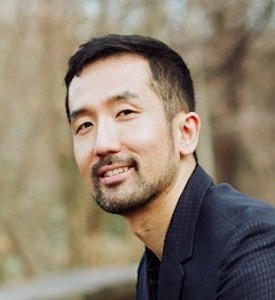
Effie Marie Cain Scholar in Medical Research
Dr. Daisuke Hattori studies how neural circuits integrate sensorimotor information, memory, and internal state to guide behavior. His previous work contributed to establishing a complete circuit diagram of Drosophila olfactory learning center, the mushroom body. His work also identified a dopamine-dependent neural mechanism in the mushroom body that mediates detection of novelty and transition to familiarity. He continues to use the Drosophila olfactory system as a model and employs a multidisciplinary approach that encompasses molecular genetics, anatomic tracing, neural recording, behavioral experiments, and computational modeling to uncover neural circuit mechanisms that provide animals with behavioral flexibility.
Glen Liszczak, Ph.D.
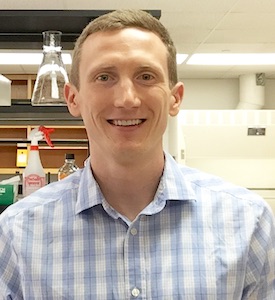
Virginia Murchison Linthicum Scholar in Medical Research
The lab of Dr. Glen Liszczak is interested in how aberrant protein post-translational modification activities contribute to genetic diseases such as cancer. By combining chemical synthesis of proteins, recombinant biochemistry, and cellular biology, we can reconstitute and perturb complicated biological signaling networks, including--those that control gene expression and cell stress responses--in highly controlled settings. Ultimately, our experimental approaches are designed to identify and characterize therapeutically vulnerable mechanisms related to protein modifications and accompanying fluctuations in metabolite levels.
Tian Qin, Ph.D.
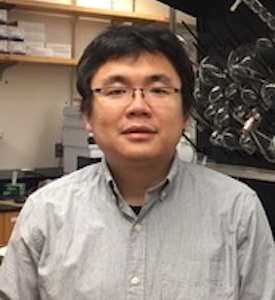
Eugene McDermott Scholar in Biomedical Research
Dr. Tian Qin focuses on the development of novel synthetic transformations and strategies that will allow access to bioactive, complex natural products and efficient synthesis of pharmaceuticals and their derivatives. Synthetic organic chemistry enables the biomedical sciences and plays a crucial, irreplaceable role in drug development.
Myles Smith, Ph.D.
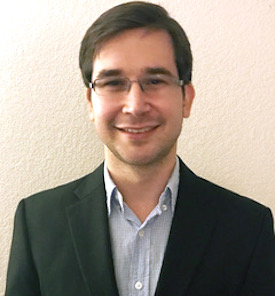
W. W. Caruth, Jr. Scholar in Biomedical Research
Dr. Myles Smith’s laboratory focuses on the synthesis of complex, bioactive molecules, as well as the development of enabling tools in asymmetric catalysis. Natural products often serve as inspiration for the selection of such targets, since their structures have evolved over millennia to interact effectively with biological systems, though they are usually not optimized for medicinal use or easily available from natural sources. By providing sustainable and flexible access to such compounds, we hope to fine-tune their properties against various diseases and probe their mechanisms of action, with a long-term goal of developing new cancer treatments. In tandem with these efforts, we aim to discover novel catalyst platforms capable of expediting asymmetric access to these targets and providing chiral small molecules of medicinal value.
Weiwei Wang, Ph.D.
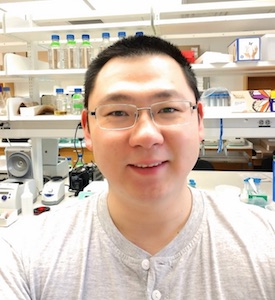
Southwestern Medical Foundation Scholar in Biomedical Research
Dr. Weiwei Wang's lab aims to understand the molecular organization of micron-scale ion channel assemblies and their function. Ion channels are electrical devices that cells use to enable fundamental physiological functions such as brain activity, sensation, muscle contraction, and hormone secretion. They usually combine with cellular scaffolding elements to form micron-scale clusters as the basic functional unit. We are developing new methods that combine cryo-electron microscopy, single-molecule fluorescence microscopy, and electrophysiology to unravel the relationship between the architecture and function of ion-channel clusters. The findings will reveal how ion-channel clusters work and allow better understanding of related neurological disorders such as hyperekplexia and autism, as well as uncover the functional significance of micron-scale biological assemblies.
Class XX (2017-2021)
Jonathan Friedman, Ph.D.
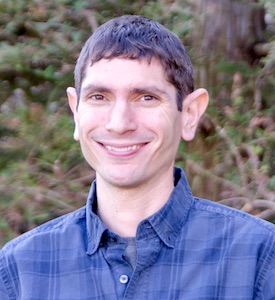
Southwestern Medical Foundation Scholar in Biomedical Research
Dr. Jonathan Friedman seeks to address a fundamental question in cell biology: How are organelles spatially organized? In particular, he is interested in mitochondria, which have an elaborate and beautiful morphology that is critical for their ability to perform a multitude of functions in the cell, most famously the production of cellular ATP through oxidative phosphorylation.
His laboratory is investigating how the cell controls the membrane organization of mitochondria, and how its hallmark cristae membranes can be dynamically modulated based on the functional needs of the cell.
Daehwan Kim, Ph.D.
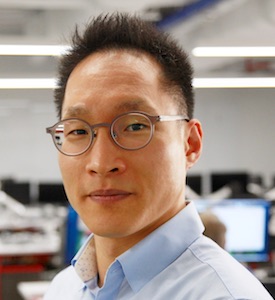
Michael L. Rosenberg Scholar in Medical Research
Dr. Daehwan Kim seeks to cross the divide between biology and computer science by using computational analysis to translate large data sets into novel biological observations and a better understanding of the fundamental mechanisms that underlie biological phenomena.
Research in the Kim Lab is currently focused on developing computer algorithms and statistical methods that enable accurate and rapid analysis of biological data, in particular sequencing data. Software systems developed in the lab include several widely used programs such as TopHat2, HISAT, HISAT2, TopHat-Fusion, and Centrifuge. Recently the lab released HISAT-genotype, the first and only program capable of HLA-typing, full-length HLA gene assembly, and novel HLA allele discovery using whole-genome sequencing data. HISAT-genotype has the potential to accurately analyze an individual’s genome and its >20,000 genes within a few hours on a desktop computer.
Xiaochun Li, Ph.D.
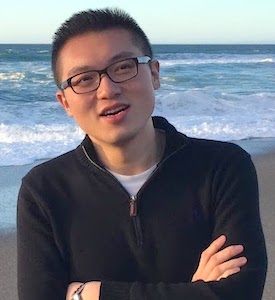
Rita C. and William P. Clements, Jr. Scholar in Biomedical Research
Dr. Xiaochun Li uses structural and biochemical approaches to illuminate the mechanisms of cholesterol synthesis, transportation, and its role as a signaling molecule in cells. Cholesterol has been shown to play a part in cell membrane maintenance, and serves as a precursor for lipoproteins, steroid hormones, and bile acids. Studies on the physiological events, in which cholesterol is involved, can provide additional molecular insights into cardiovascular diseases, stroke, and cancers.
Dr. Li's lab also investigates the structural studies of lysosomal membrane proteins implicated in lysosomal storage diseases. The structures are a starting point from which the Li lab will further investigate the function of the various target proteins.
Ping Mu, Ph.D.
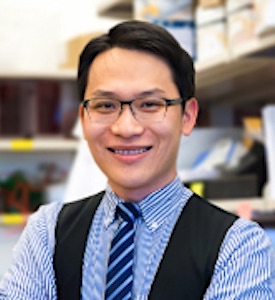
Deborah and W.A. “Tex” Moncrief, Jr. Scholar in Medical Research
Dr. Ping Mu studies how patients with castration resistant prostate cancer (CRPC) become resistant to antiandrogen treatment, a major challenge in targeted therapies. Nearly 60% of patients exhibit early resistance to the drug, and most who initially respond will develop later resistance, largely limiting the benefit of antiandrogen therapy.
There is an urgent need to identify novel biomarkers and develop therapeutic approaches to prevent antiandrogen resistance or overcome it. His lab focuses on understanding the mechanisms of antiandrogen resistance, identifying novel biomarkers, and developing therapeutic approaches to prevent or overcome resistance.
Matthew Sieber, Ph.D.
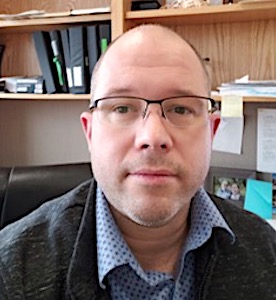
W.W. Caruth, Jr. Scholar in Biomedical Research
Dr. Matthew Sieber studies the dynamic changes in metabolic programs that support developmental and disease progression. Using a combination of genetics, molecular biology, and system-based approaches (metabolomics, proteomics, and transcriptomics) our lab is investigating metabolic mechanisms that support reproduction, development, and progeny disease susceptibility in Drosophila and mammalian tissues. Our work focuses on three key areas: 1) defining the metabolic mechanisms that underlie cellular quiescence and reactivation, 2) examining how dynamic changes in the mitochondrial metabolism support growth and differentiationm and 3) examining how changes in metabolism and dietary nutrients influence the regulation of conserved pathways that control development and disease progression.
Ruhma Syeda, Ph.D.
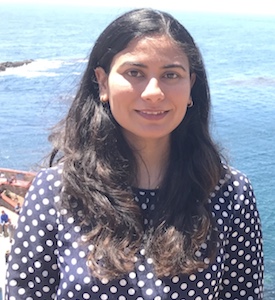
W.W. Caruth, Jr. Scholar in Biomedical Research
Dr. Ruhma Syeda is interested in mechanotransduction—the process by which cells convert external forces to electrical responses. Specifically, her focus is on the structure-function relationship of mechanically activated proteins called Piezos.
Her lab employs electrophysiology, molecular biology, and protein purification and reconstitution to investigate how Piezo proteins sense external forces and open their activation gates to allow ion conduction. Piezos are known to be light touch sensors in specialized skin cells and volume sensors in red blood cells. Both Piezo1 and Piezo2 are major drug targets for various diseases including blood disorders, mechanical allodynia, and somatosensory disorders.
Jeffrey Woodruff, Ph.D.
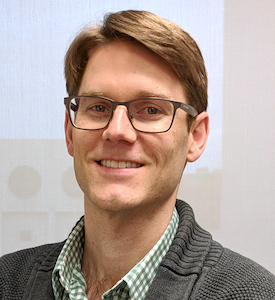
E.E. and Greer Garson Fogelson Scholar in Medical Research
Dr. Jeffrey Woodruff combines synthetic biology, live-cell imaging, and nano-scale materials science approaches to determine how eggs and other stem cells guard themselves against ageing and faulty cell division.
As we age, we become less fertile and more prone to cancer. These two problems are similar in that they involve failure of quality control during cell division. How do normal cells divide and prevent problems? And what happens as our cells age? My lab specifically studies subcellular structures, called biomolecular condensates, that protect eggs from premature ageing and ensure proper cell division during embryonic development. The long-term aims of my research are to 1) identify biomarkers of egg health to increase the efficiency of in vitro fertilization (IVF), 2) determine the molecular mechanisms that prevent cells from becoming cancerous, and 3) discover genetic factors and compounds that extend fertility and prevent tumor formation.
Jun Wu, Ph.D.
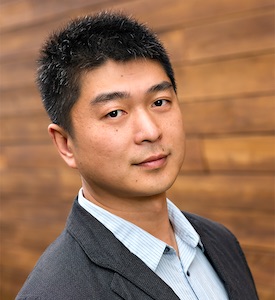
Virginia Murchison Linthicum Scholar in Medical Research
Dr. Jun Wu has contributed to generating new stem cells for basic and translational studies, and developing novel and efficient genome and epigenome editing tools. He expanded the spectrum of pluripotent states by capturing new types of pluripotent stem cells (PSCs) with distinct molecular and phenotypic features from several species of rodent, ungulate, and primate.
Dr. Wu recently succeeded in generating PSC-derived interspecies chimeras and developed an efficient and versatile interspecies blastocyst complementation system for organ generation, which provides hope for solving the severe worldwide shortage of donor organs. His group is particularly interested in harnessing interspecies chimeras for studying development, evolution and the molecular basis of xenogeneic barriers.
Class XIX: (2016-2020)
Xiaochen Bai, Ph.D.
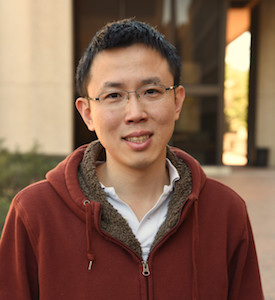
Virginia Murchison Linthicum Scholar in Medical Research
Dr. Xiaochen Bai, Assistant Professor of Biophysics and of Cell Biology Dr. Xiaochen Bai thinks of himself as a molecular biologist and electron microscopist who specializes in image processing on cryo-electron microscopes (cryo-EM) like those at UT Southwestern’s advanced cryo-EM facility, which uses automation and sensitive detectors to view flash-frozen samples.
Other planned research will take a deep dive into cell surface receptors, which allow communication between the outside and inside of a cell. In research that could lead to new cancer therapies, he will study receptor tyrosine kinases (RTKs), which play important roles in many normal body functions.
Don Gammon, Ph.D.
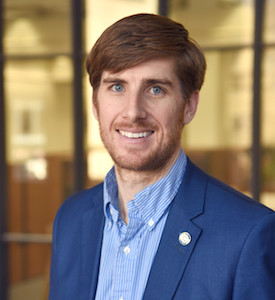
W.W. Caruth, Jr. Scholar in Biomedical Research
Dr. Don Gammon has created novel modeling systems in which to study virus-host interactions in invertebrates. His work is expected to lead to a better understanding of the innate immune mechanisms that eukaryotic organisms use to restrict viral replication as well as the strategies that viruses use to counter those restrictions.
Our research is driven by a desire to understand how these microscopic machines both replicate themselves and, at the same time, manage to evade, manipulate, and counter a myriad of host defenses. We use novel virus-invertebrate host model systems to explore the innate immune mechanisms that eukaryotic organisms use to restrict virus replication, and the strategies viruses employ to counter such restrictions.
Lab website
Lukasz Joachimiak, Ph.D.
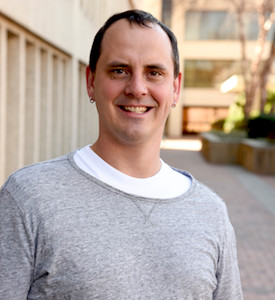
Effie Marie Cain Scholar in Medical Research
Dr. Lukasz Joachimiak has a passion for exploring how structural biology and biochemistry relate to human disease. His laboratory specifically studies how protein-based molecular recognition drives mechanisms underlying neurodegenerative diseases. His cross-discipline approaches are expected to capitalize on recent advances in mass spectrometry and protein engineering to help answer important questions in some of the world’s most devastating conditions, including Alzheimer’s and prion diseases. His group is also interested in integrating experimental and computational methods to predict the structures of protein complexes not tractable by classical structural biology techniques.
Lab website
Takashi Kitamura, Ph.D.
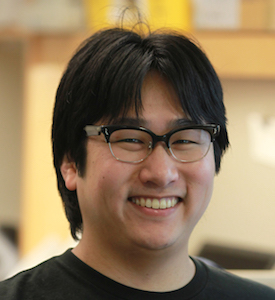
Southwestern Medical Foundation Scholar in Biomedical Research
Dr. Takashi Kitamura, Assistant Professor in the Department of Psychiatry “Episodic memory consists of associations of objects, space, and time. My previous studies identified specific neuronal populations – the ocean cells and the island cells – that encode these unique physiological properties, that is the ‘where’ and ‘when’ of episodic memory,” Dr. Kitamura said. “The goal of my laboratory is to understand neural circuit mechanisms and the computations that allow animals to associate events that are separated by time into a complete episodic memory.
Ram Madabhushi, Ph.D.
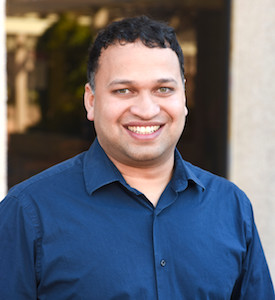
Thomas O. Hicks Scholar in Medical Research
Dr. Ram Madabhushi specializes in research on genomic integrity and epigenetic regulation of gene expression in the brain under both natural and pathological conditions. It is widely believed that depression, schizophrenia, and addiction are all influenced by epigenetic mechanisms.
Dr. Madabhushi said it is now clear that activity-induced DNA breaks are linked to gene expression in a number of cell types and systems, including genes activated by estrogen, androgens, and insulin signaling. The aberrant repair of these DNA breaks, he said, has been linked to the development of certain cancers, which will provide an additional interest of his laboratory.
Fei Wang, Ph.D.
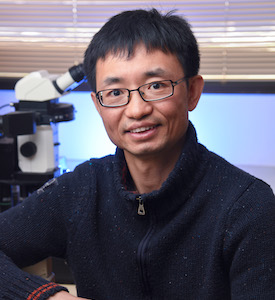
Nancy Cain and Jeffrey A. Marcus Scholar in Medical Research, in Honor of Bill S. Vowell
Dr. Fei Wang’s research interest is in dissecting molecular mechanisms of essential membrane-associated cellular events in eukaryotic cell development.
He currently is working on revealing the role of Autophagy in cell development, aiming to understand the molecular mechanism. His studies will shed light directly on autophagy functions in eukaryotic gametogenesis, the production of sperm (spermatogenesis) and oocytes (oogenesis), and more broadly, on how the autophagic machinery rearranges membranes for crucial aspects of development.
Lab Website
Class XVIII (2015-2019)
Maralice Conacci-Sorrell, Ph.D.
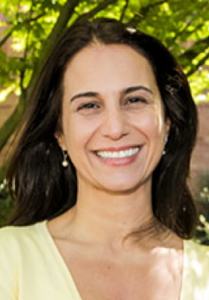
Virginia Murchison Linthicum Scholar in Medical Research
The ability of tumor cells to survive chemotherapeutic agents and to metastasize reaching distant sites is the major cause of cancer mortality. Thus, to develop therapies that effectively target recurrent tumors it is essential to define the specific molecular regulators that directly coordinate increased cancer cell survival and motility. The Myc oncogene is hyper-activated in over 70 percent of human cancers and is an essential driver of tumor initiation and progression. Therefore developing ways to specifically target the oncogenic functions of Myc may provide an important avenue to treat multiple types of malignancies.
While Myc family members (Myc, MycN, MycL) were shown to profoundly affect multiple aspects of cancer biology, the specific molecular mechanisms through which Myc regulates functions that are critical for tumor progression remain to be resolved. To date, all studies have focused on Myc proteins as nuclear heterodimers with Max that transcriptionally fuel cancer cell proliferation. Recently, I discovered an entirely new function of Myc that is independent of transcription. I found that a cytoplasmic form of Myc, named Myc-nick, drives cancer cell migration and survival in response to chemotherapy, hypoxia, and nutrient deprivation. My work showed that cancer cell survival and migration are stimulated by the acetylation of specific cytoplasmic proteins mediated by a complex containing acetyltransferases and Myc-nick. Myc-nick-dependent acetylation of a-tubulin and ATG3 (autophagy related 3) promotes survival by increasing autophagy of cells exposed to hypoxia and starvation. Moreover, Myc-nick stimulates cell motility by promoting the expression of fascin, a key driver of metastatic behavior in solid tumors
My working hypothesis is that Myc-nick-induced protein acetylation is a key mediator of a process in which cancer cells acquire migratory properties concomitantly with increased survival. The goal of my future research is to identify regulators and effectors of Myc-nick production and function and thereby develop biomarkers for pre-metastatic behavior and therapies to treat Myc-dependent tumors.
Lab Website
Peter Douglas, Ph.D.
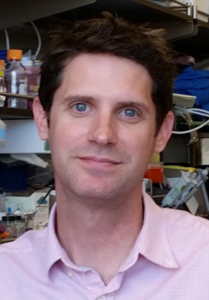
Southwestern Medical Foundation Scholar in Biomedical Research
Research in the Douglas Lab seeks to understand how stress response pathways alter cell physiology, and ultimately influence the aging process and human disease. Cells possess dormant pathways which are activated under times of stress in order to buffer deleterious effects and help restore the cell to resting homeostasis. We have the ability to harness these latent stress response pathways and apply their protective properties to a multitude of disease models.
Jan Erzberger, Ph.D.

The Erzberger Lab is interested in understanding the dynamics of protein-RNA interactions during specific stages of eukaryotic ribosome biogenesis. In particular, we are focusing on the roles of multiple ATPases in the timing of ribosomal RNA remodeling events that define the internuclear maturation of pre-ribosomes and help modulate the regulatory interactions between ribosome biogenesis and the cell cycle machinery.
Rather than concentrating on a specific technique, we are using a combinatorial approach, bringing together the strengths of in vitro biochemical reconstitution, genetics, x-ray crystallography, cross-linking coupled to mass spectrometry, electron microscopy and light microscopy to understand these events across multiple levels of resolution.
Kendra Frederick, Ph.D.
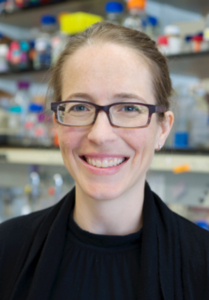
Lupe Murchison Foundation Scholar in Medical Research – Inaugural Murchison Scholar
Dr. Frederick’s Lab in interested in how proteins fold in complex physiological environments. Her laboratory develops methodology to study protein structures in their native environment: the cell. They combine new biotechnology for sample preparation with state-of-the-art sensitivity-enhanced solid-state nuclear magnetic resonance (NMR) techniques and apply these techniques to determine how cellular environments influence the folding pathways of meta-stable and intrinsically disordered proteins. Misfolding of such proteins is involved in the initiation and progression of human diseases ranging from neurodegeneration to cancer. The Frederick Lab works to define toxic and non-toxic protein conformation in biologically-relevant contexts such as cells with genetic backgrounds that predispose individuals to disease.
Milo Lin, Ph.D.
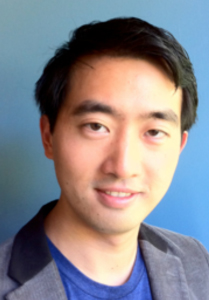
Cecil H. and Ida Green Endowed Scholar in Biomedical Computational Science
The Lin Lab develops theoretical models and uses computational tools to find the performance limits of complex biological systems. These systems often occupy a tiny functional fraction of a much larger space, mostly consisting of nonfunctional systems. This is true, whether considering the conformational space of macromolecules, or the connectivity space of neural networks. From this perspective, the conceptual challenge is to understand how the structure of the space dictates the types of search algorithms that can find the functional subspace in the relevant time-scale. Depending on the biological process, the relevant time-scale can differ by over twenty orders of magnitude, from molecular to evolutionary time.
Processes of interest include the multi-scale mechanisms of protein folding, dynamics and aggregation, as well as design principles for signal transmission in molecular and cellular networks. Questions driving the lab are: 1. how system-wide properties emerge from the elementary interactions; and 2. why such emergence is evolutionarily scalable.
Tiffany Reese, Ph.D.

W. W. Caruth, Jr. Scholar in Biomedical Research
The state of the immune system and its ability to respond to challenge is a function of many variables, which include genetics, age, chronic disease, gut microbiome, and stress. Recent work suggests that a significant proportion of the variation in human immune response is driven by non-heritable or environmental influences. Chronic infections with pathogens (including mycobacteria, helminths, malaria parasites, and some types of viruses) affect a large proportion of the population, and are potential environmental contributors to immune variation.
In addition to the diseases caused by these pathogens directly, it is increasingly clear that these persistent infections change immunity to other unrelated pathogens and to vaccines. While epidemiological and clinical data demonstrate an association between bystander chronic infections and altered immune responses there is little mechanistic data to explain these associations. A more detailed understanding of the immune mechanisms could improve vaccine efficacy and treatment of chronic infections. Using chronic viral and helminth infections, we seek to further define the role of co-infections on response to infections and vaccines in the mouse system. Lab Website
Vincent Tagliabracci, Ph.D.
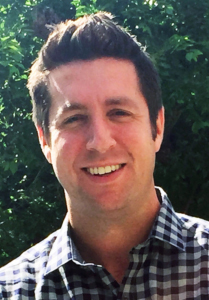
Michael L. Rosenberg Scholar in Medical Research
The Tagliabracci Lab studies the phosphorylation of extracellular proteins by a new family of eukaryotic secretory pathway kinases. One member of this family, Fam20C, phosphorylates hundreds of secreted proteins. Fam20C substrates are involved in a broad spectrum of physiological processes, including lipid metabolism, wound healing, cell migration, biomineralization and inflammation. Understanding the functional implications of these phosphorylation events and how these modifications impact human biology are major objectives of the laboratory.
